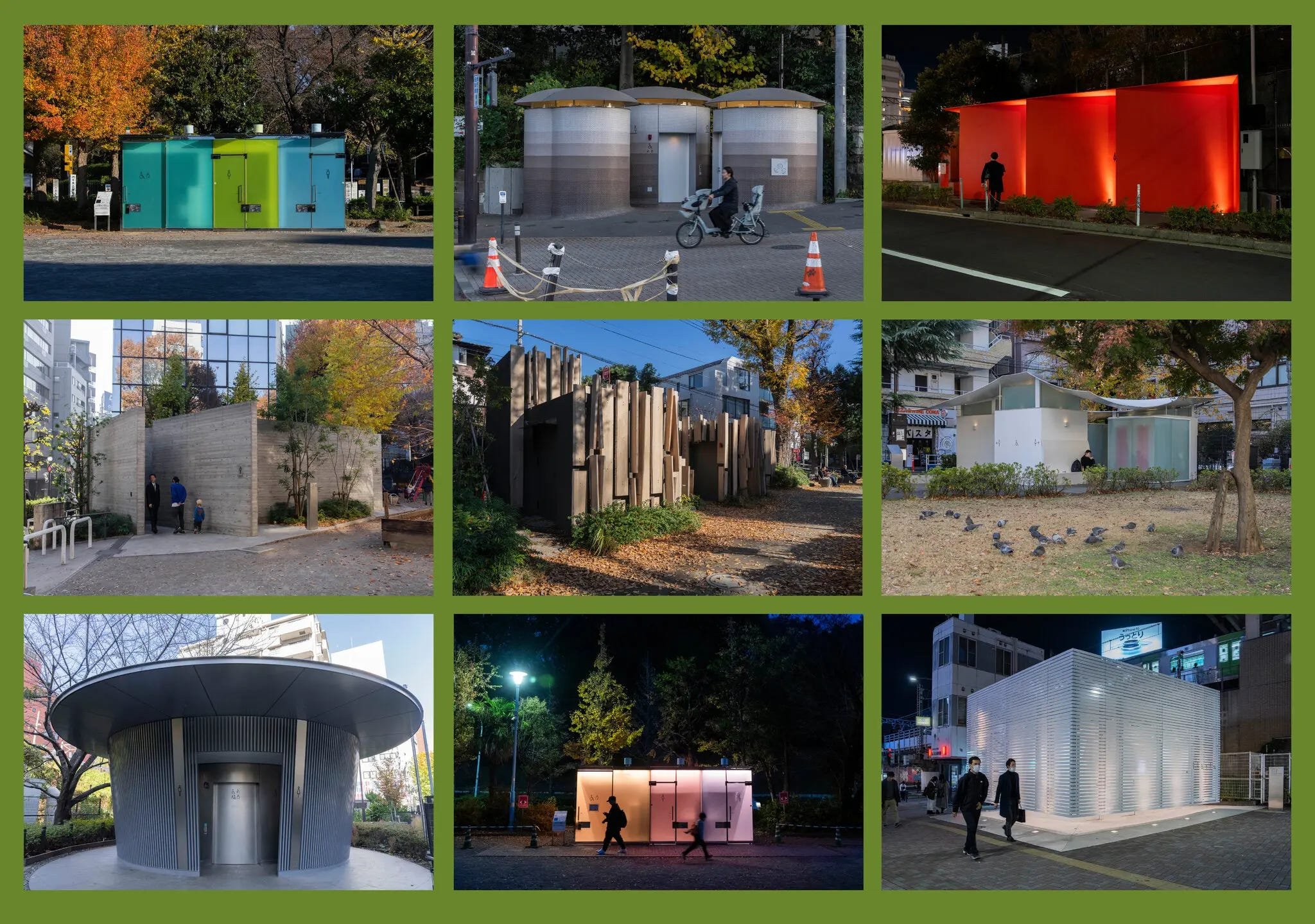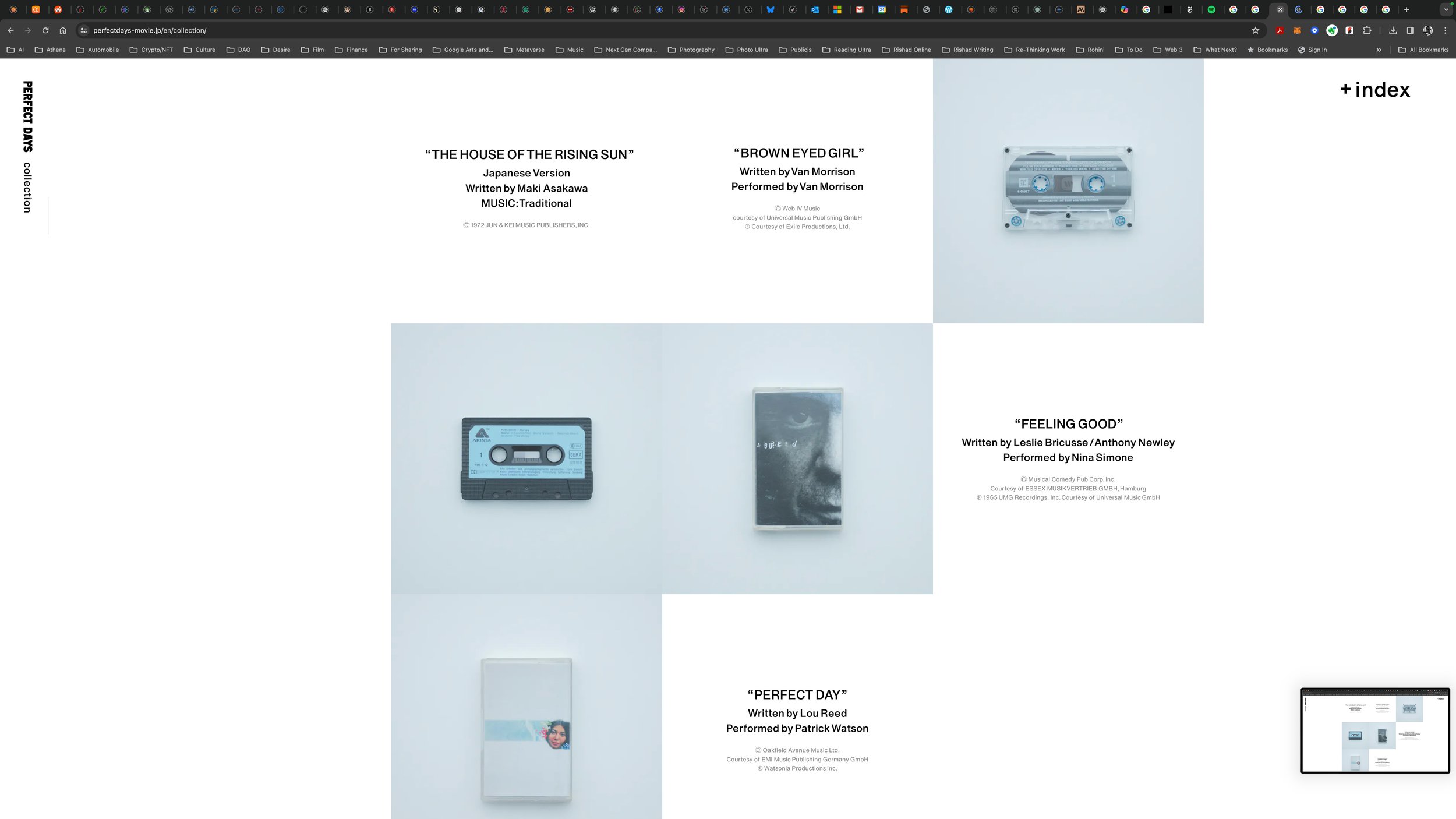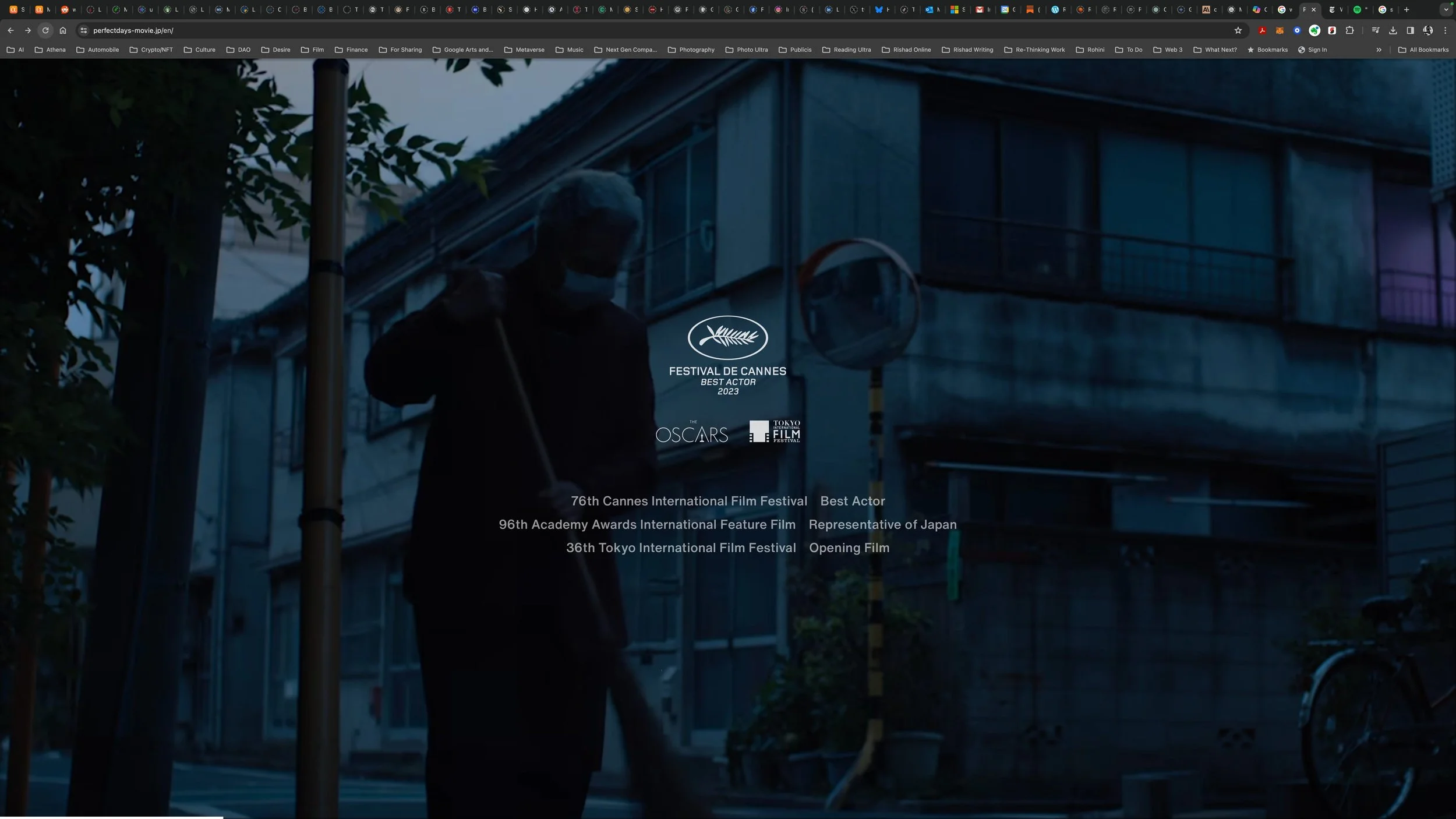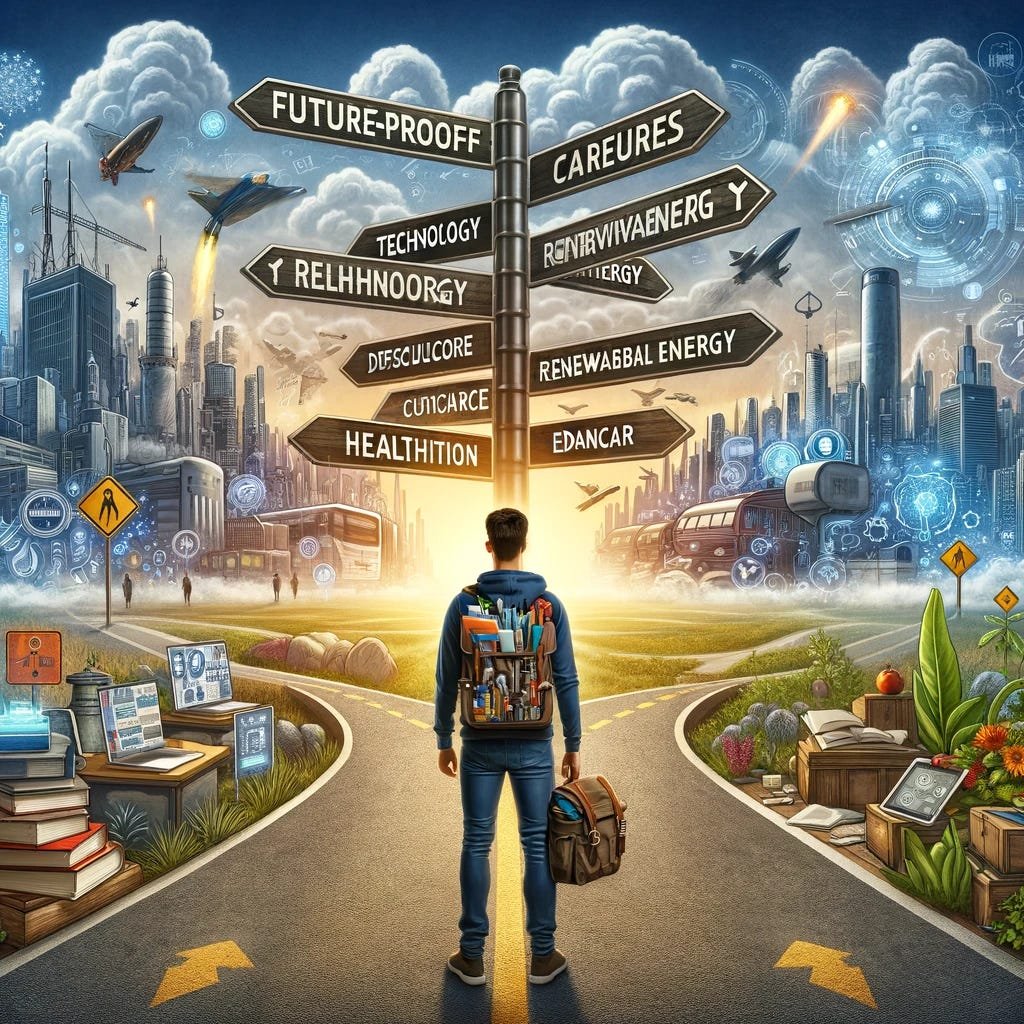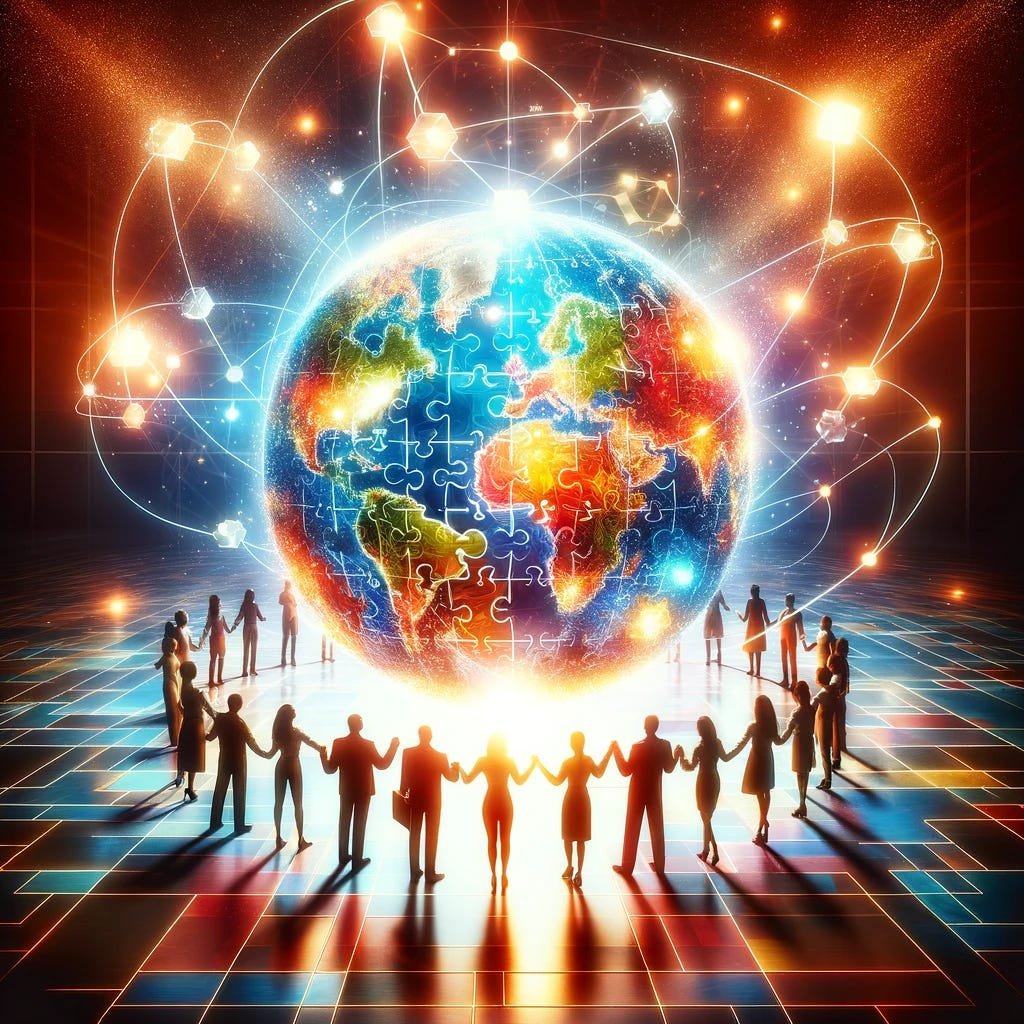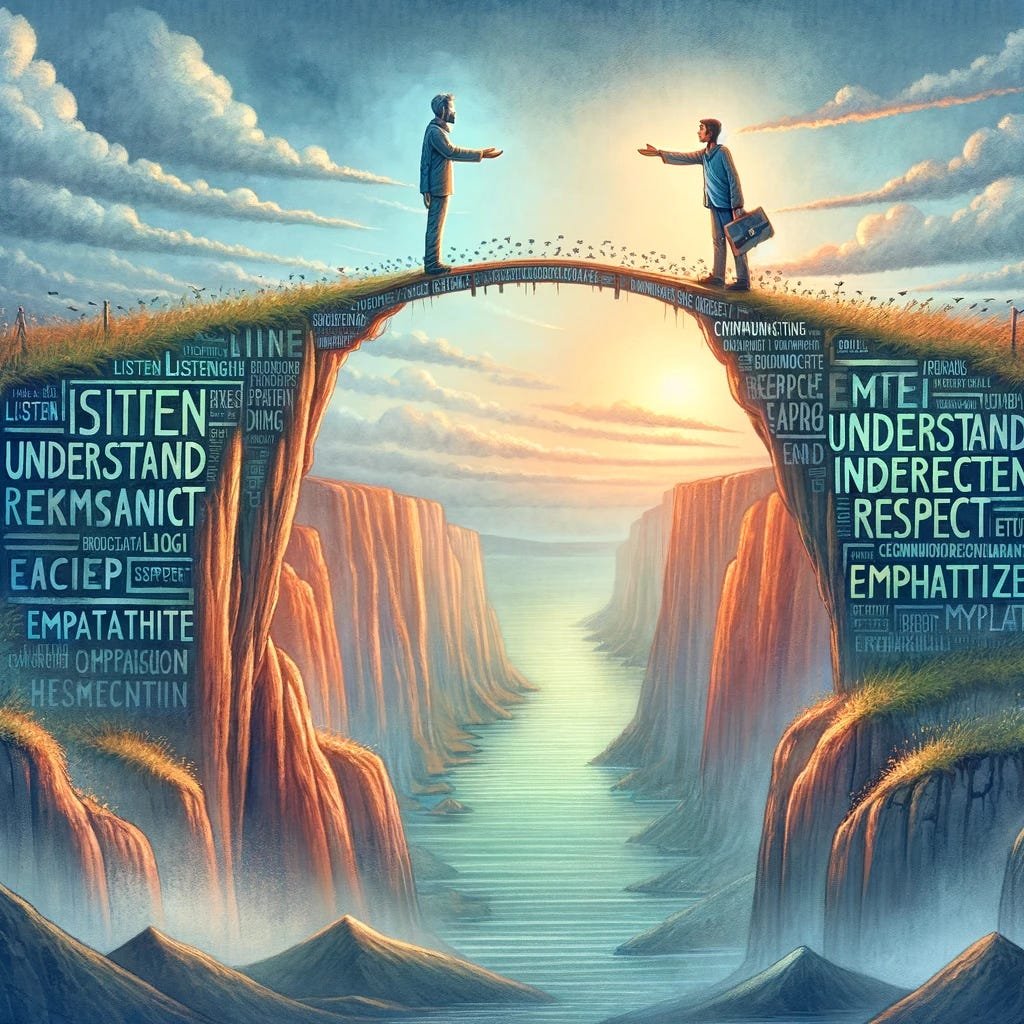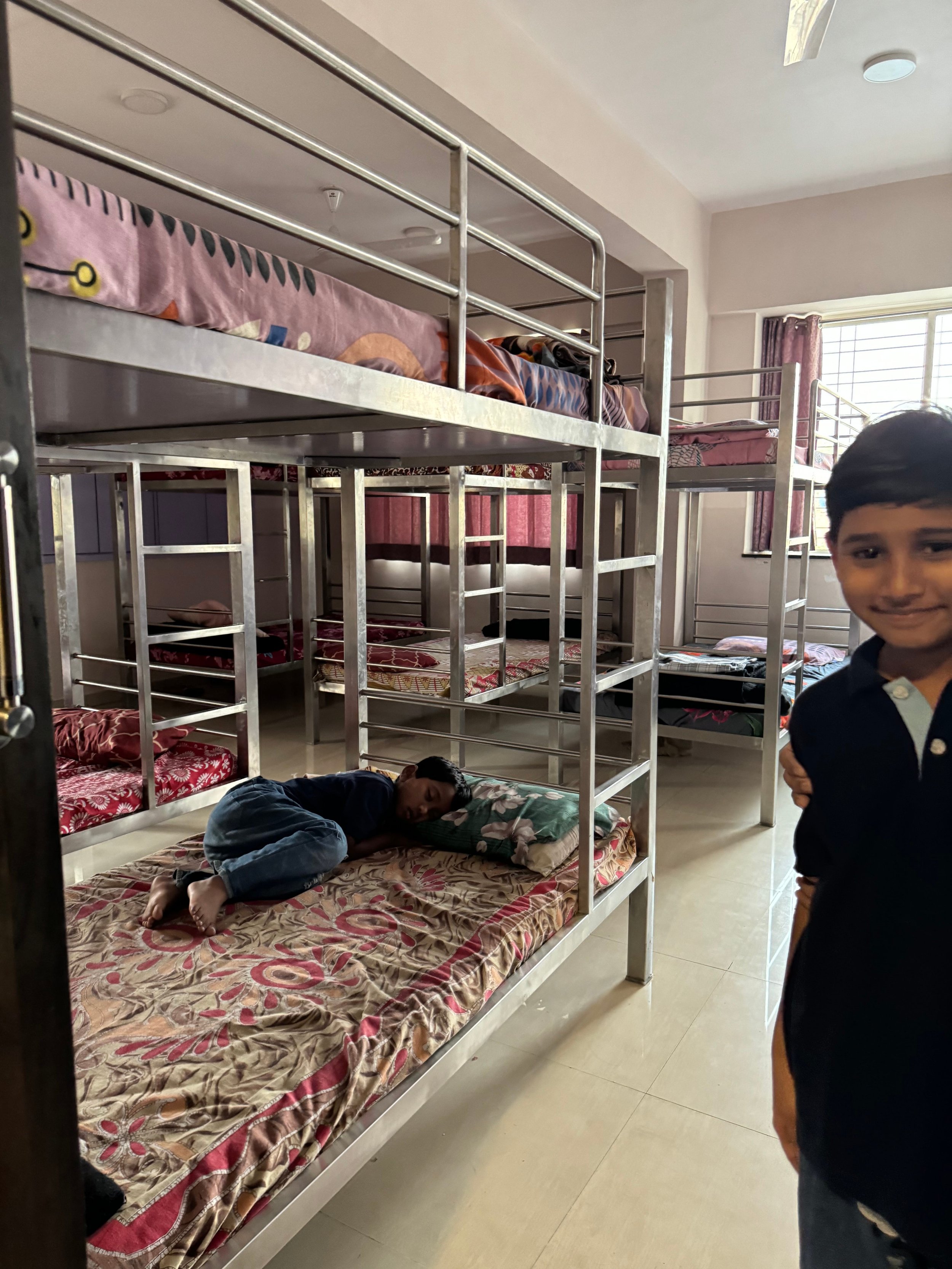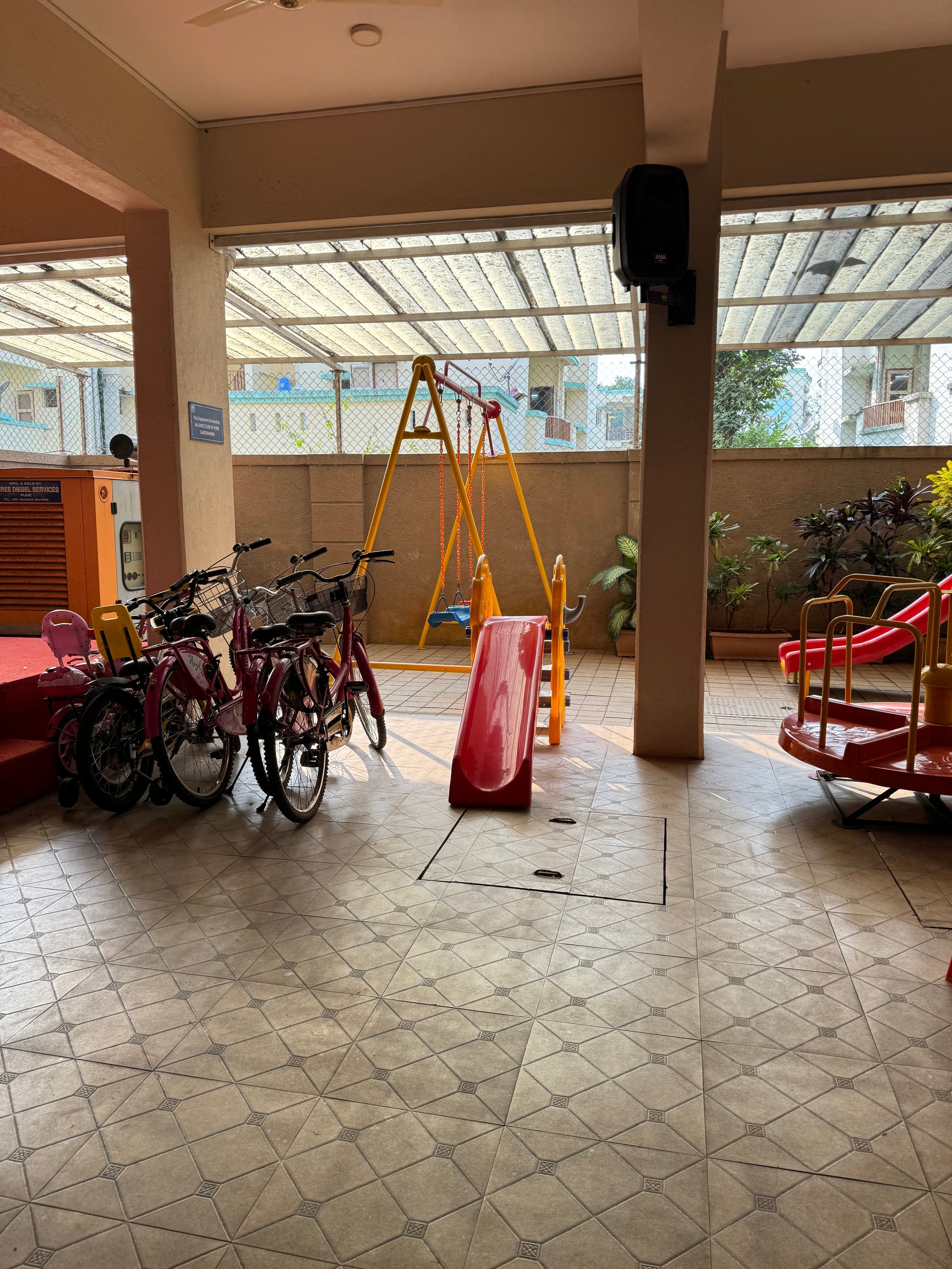Fractionalized Employment Now!
Photography by Albrecht Voss
Most of us need to work and it is central to our identity.
Yet, even though work is important most of us do not define ourselves solely by work.
We have many other identities and responsibilities (parent, caregiver, sailor, artist…) that make us who we are or passions we wish to pursue.
To integrate and deal with the spectrum of what life brings we could work at a job with all its benefits but also constraints or be a free-lancer/independent worker with all its freedoms but uncertainties.
Today due to several forces there is the possibility of another way as we architect the future of work.
A way that benefits both the individual employee and the firm.
Photography by Albrecht Voss
Four Forces.
Four con-current forces are re-sculpting the nature of work and what constitutes a company in the most dramatic ways in over a century.
1. AI: AI will significantly enhance productivity. Companies will be be able to do more with less. While new types of jobs will be created and enhanced productivity can allow companies to invest in new areas so employment will grow, it is very likely that the need for employees in any existing knowledge role will decline.
People will either do higher level tasks or be trained for new tasks or see a demand for their existing skills diminished.
2. Declining populations combined with an explosion of older people: Except for the continent of Africa most countries particularly Europe, the US, China, and Japan which account for most of the global GDP are seeing shrinking populations.
At the same time all these countries are seeing rapidly aging populations with 10,000 people turning 60 every day in the US. Many of these aging folks have skills and expertise that will remain critical in an AI age ( perspective, mentoring people, expertise in craft) and are likely to want to or need to work for financial or other reasons but may not want to or be in a position to work full-time.
3. Covid-19: Unbundled and distributed work has changed people’s mindsets. Our minds are like champagne corks that once opened swell and do not fit back in the bottle. Everything is being questioned from the nature of work to the role of management.
People want to and need to work but many now no longer ask how do I find time for my life in a world of work but rather how does work fit in my life?
4. Generational Mindsets and the Side-Gig: Today’s reality is that 66 percent of Gen-Z with a full-time job in the US have a side gig or side hustle and 76 percent want to work for themselves. A plethora of new marketplaces from UpWork to Etsy to Shopify are enabling the feeding of passion projects, enhancing optionality and increasing income.
Photography by Albrecht Voss
The Fractionalized Employee.
Today most companies combine three types of work forces.
1) A full-time employee,
2) A full-time or part-time contracted employee from another firm (e.g., Wipro or Cap Gemini)
3) Free-lancers (directly or via an intermediate firm)
Full-time employees are usually the backbone of any company and its culture with contracted and free-lancers being mixed in to expand expertise and manage oscillating workloads in a cost-effective manner.
We may now want to think of a fourth type of worker to reflect the forces of technology, shifting demographics and new mindsets: The Fractionalized Employee.
Imagine if one could get both the continuity and loyalty of a long-term employee with the flexibility of cost management of a part time employee and the expertise of a free-lancer and do so in a way that both grows employees and retains them in the long run.
This is the Fractionalized Employee.
Every employee in the company is given a choice to work 100%, 75% or 50% of their time.
They get to select this at the beginning of every year or can adjust to a different level when a life event occurs (health, birth of a child, need to take care of a parent, a passion that needs to be attended to or other life issues).
No longer does an employee have to choose between staying or going or being torn trying to do two things at one time. If they wish to try out a different type of non-competitive job (starting a gaming company –assuming they are not working at a gaming company--or being an artist or writing a book) it behooves their employer from letting them do so because retaining half or three quarters of a talented person is better than zero. As importantly these external skills or vocations will make the employee better rounded and probably more productive. And there will be cost savings from both reduced compensation but also eliminating the friction and cost of severance, re-hiring, and training.
And as AI makes companies realize they need to change, adapt and manage new talent mixes, fractionalized employment allows for a smart way to manage costs by dialing down employee cost while ensuring the dignity of continued employment, the security of continued health care and the enablement of those employees using the non-employment time to earn revenue or build new skills for an AI age or take care of personal needs.
And it will probably attract a lot of talent who may want to work 50 to 75 percent of their time.
Including the more seasoned who might only want to work half time. As countries grapple with aging and declining populations this is one way to address this issue.
For the employee they do not have to give up an income stream, health benefits or a part of their identity to build new skills, pursue new horizons or take care of life’s events. Over the course of a career, they can dial up and down the percentage they work.
The Fractionalized Employee model will allow companies to retain talent, grow talent, mix, and match talent in ways that are truly win-win.
Employees gain greater flexibility, optionality, opportunity for growth, managing life stages, and time to build additional expertise.
Employers can attract new types of talent, retain starts, elongate the careers of seasoned experts and long time employees, calibrate costs in humane ways that do not negatively impact culture, and enhance adaptability to changing circumstances.
Photography by Albrecht Voss
Overcoming the hurdles to Fractionalized Employment.
The fact that outside Australia and some countries in Europe this is a very rare option is due to several concerns among employers which need to be addressed.
There are many concerns from it will be hard to implement to employees will use this to prepare for their next gig to customers and clients will find it un-acceptable.
We must lose these controlling mindsets, fear filled mindsets and lack of imagination mindsets.
Employee Flight: Talent is not owned by a company. They work for the company. Giving them more flexibility is likely to increase retention since talent can now do their side hustle or passion project openly and bring that expertise and credibility into the company. The time they have for themselves can help them look after their families or try new stuff without having to leave their company. They often can also discover that the the grass is greener on the other side because it is fertilized with bullshit. Trust talent and they will trust back.
Client/Customer Challenges: Clients and Customers are likely to embrace this for a variety of reasons. First they are likely in an AI age want to continue to access their key talent but given productivity increases not need as much. Second, if given a choice between not having access to the folks they want or less access they are likely to opt for limited access. Third coverage can be guaranteed because fractionalized employees can be 100 percent available during key periods and the savings from their compensation can be used to provide customers with a wider palette of talent or other coverage.
Most talent organizations are really good and can definitely incorporate this new type of worker by adopting the following process to make this manageable:
Limited Choices. Employees who wish to work less than full time but get full health benefits and pro-rated financial benefits such as bonuses or equity should be given only two alternative levels--50 percent of full time or 75 percent of full time. This limitation makes the program easier to administrate and manage. If people were allowed to select any percentage, it would be a nightmare for payroll and to arrange coverage when they were off work.
Limited Sign Up/Change Periods. An employee can only decide to change their percentage once a year during a particular two-week period—perhaps in September of the previous year for the following year. The only exception would be a major life or health event. This enables companies to forecast how many workers they will need and how work gets covered. It also enables far easier administration.
Limited Eligibility. Being selective helps funnel high performing candidates into the fractionalized program, a key measure since the program is designed for the company’s best talent and those who are well-versed in the company’s culture and processes. To limit eligibility, the following criteria are useful:
a)Having a minimum number of years of service. For example, one must have worked in the company for at least x years full time before being eligible.
b)Achieving a specific level of performance or a minimum rating level (only candidates with levels evaluation).
c)Restricting eligibility. Certain roles which require full-time presence such as overseeing a large team or providing continuous service to a highly demanding customer.
Companies that allow for Fractionalized Employment are going to have a significant advantage in a world of AI, changing demographics, new mindsets and emerging marketplaces.
The Rise and Fall of Giants?
Photography by Aline Smithson
When companies like AT&T, IBM, General Electric and General Motors were the world’s leading organizations in the 20th century, it seemed as if they might always occupy their lofty positions. Few could envision the emergence of new, dominant companies and industries. Apple, Google, Amazon and others rose with astonishing speed to become leaders in their categories.
Will this new era of the four shifts of power, demographics, mindsets and technology bring about a tectonic change in the corporate landscape?
Photography by Aline Smithson
A New Breed of Companies?
Will the same scenario take place in the years ahead? As tempting as it might be to predict that we’ll have a similar changing of the guard in the future, the following graphic provides a needed corrective to this thinking, showing the most valuable companies over the last three decades (Source: GPT-4):
The lists are surprisingly similar, with four types of companies dominating the list (technology, pharmaceuticals, energy, and financial powerhouses) and Walmart.
This is a decade, two decades and three decades after the birth of the Internet. With the exception of GE, most of the companies or their immediate competitors remain the same over two and sometimes three decades.
Some new technology companies like Apple, Nvidia and Taiwan Semiconductor make the list today, replacing a Nokia, IBM, and Intel. Why? Because Nokia failed to re-imagine phones and let Apple thrive; Intel failed to re-imagine chips, allowing Nvidia take the lead; and IBM couldn’t grasp the next generation of many things including silicon manufacturing, giving Taiwan Semiconductor an opening to dominate.
But overall, the top lists are remarkably similar by type of company with really only one new entrant, Meta, built on the relatively new social media category.
Given this historical performance, the list of leading companies a decade from now shouldn’t be that much different from the 2023 list. It’s likely that Apple, Alphabet, Microsoft, Berkshire Hathaway, Johnson and Johnson, JP Morgan, Procter and Gamble and Walmart will remain in the top 25. Accompanied by a big Credit Card company, a chip manufacturer, and a big energy firm or two. Tesla may remain if it morphs into an energy or AI firm but otherwise it may be a one decade wonder.
They and other major corporations have been taught the need to adapt and incorporate the latest technologies and ways of working and learning—the cautionary tales of Nokia and GE have not been lost on them.
At the same time, we’re bound to see the rise of certain companies in certain industries:
AI: While Alphabet and Microsoft are well on the way to become giants of an AI age, they are likely to be joined by new players such as ByteDance, the parent of Tik Tok, Open AI and other firms being newly launched. Will Nvidia which just in the past few months has risen to being the third most valuable company linger on these lists for decades or will new open and light models from companies like France’s Mistral reduce its expected dominance?
Biotechnology: In addition to AI, it is likely that a new giant or two focused on biotech like a Moderna will emerge.
Climate Technology: As concern about climate grows, so too will the companies in the category—at least one is bound to emerge from the pack, especially if they’re able to address major concerns in a way that is innovate and effective.
Tech Enabled Disruptors: These might be a Stripe or a Snowflake or companies of the same ilk.
India: In addition it would be surprising if a decade from now if one or two companies were not from India whether it be a Reliance, a Tata or a Adani.
Photography by Aline Smithson
Companies will operate differently.
While the mix of leading corporations may not change dramatically, they will operate differently from the way they did in the past.
Fewer employees due to increased productivity: They will have fewer full-time employees because they will leverage the power of AI to do more with less and use marketplaces to utilize more part time workers to ensure flexibility and speed in a shape shifting world.
This does not mean there will be less employment since some companies while being more productive will be more profitable and fast growing. In addition significant job growth will come from a larger number of smaller companies as well as many people earning income from more than one company or gig at the same time.
They will be far more geographically distributed: As the world becomes far more multi-polar with the continued rise of India and China among others and the ability of modern technology such a spatial computing to facilitate working from anywhere.
Employee Joy: It is likely that companies will run with a greater focus on employee joy as talent and culture will become the key differentiator as other areas become commoditized.
In an increasingly advanced digital silicon world, almost everyone will have access to the same tools and technologies and the differentiation will come from traditional analog carbon wealth called people or humans. Leaders and companies that can attract, retain, grow and align this human capital will be the ones that will flourish.
Photography by Aline Smithson
A Whale and Plankton Eco-System of Mutual Enforcement.
Perhaps the biggest change in the eco-system of companies will be the proliferation of smaller companies connected directly and indirectly to the giants. As members of younger generations want to work independently or pursue side hustles and as technology makes this increasingly feasible, the giant corporations will become reliant on millions more small businesses and independent contractors.
It will be the whale-and-plankton paradigm.
The debate between big and small is a false debate because the future model will need big and small working together.
There will continue to need to be the need for “old scale” which is the scale of resources, scale of size, scale of spending and scale of manufacturing in almost all industries.
To create break throughs in computing, bio-technology, transportation or many other fields one will require the investments to capital, huge pools of data and the ability to invest in R&D over years as the large pharma companies such as Merck or Pfizer, technology companies like Google and Microsoft and transportation companies such as GM and Toyota do.
It takes tens of billions of dollars to create the architecture for AI for instance.
On the other hand these large companies create the infrastructure as well as the spending power that allows thousands of other companies to feed off their investments, spending, distribution and pioneering.
This is where the new scale of networks, talent, ideas and creativity will be the differentiators.
Apple supports tens of thousands of developers who leverage the App store, Google’s You-Tube enables millions of creators, Amazon enables sellers and Microsoft provides cloud and computing services that anyone can plug into.
But it is not just the small companies that feed of the big but the big ones feed of the small both in generating income through fees (cloud services), commissions (percentage of revenue for being listed on an app store), revenue generated ( You-Tube running advertising against creators) but also as places of innovation or talent that they can buy and scale ( Meta bought Instagram, many pharmaceutical companies buy smaller bio-tech firms)
This dance of big and small constant and continuous will continue in the future.
It will less be a rise or fall giants but the dance of an eco-system of companies and talent constantly connecting, flowing and adapting as they seek growth.
The future will be fluid and to thrive it will be key to be flexible both as an individual and a firm.
Perfect Days.
The photographs above are a sampling of the public toilets in Tokyo.
From the New York Times:
“Perfect Days” — which was Japan’s entry to the Oscars in the international feature category, and landed a nomination — started life when its director, Wim Wenders, was approached about working on a project that would elevate the profile of Tokyo’s pristine public toilets. He proposed a narrative feature, and the film was born.
“Perfect Days” is currently in theaters in North America ( it will be available in a few weeks on major streaming platforms) and is one of the five nominees for Best International Film at the Oscars.
Koji Yakusho won the best actor award at Cannes this summer.
It is one of the best pieces of art I have experienced in that it takes you everywhere by not taking you anywhere.
This work is probably the best in decades by the legendary Wim Wenders who has the eye of a photographer and the soul of forever. We see him here working at peak form combining with Kojue Yakusho one of the finest actors ever to make every scene, every gesture (much of the movie is silent or only has a soundtrack) feel so fresh that it is shocking how the ordinary becomes the extra-ordinary.
It is movie where nothing seems to happen in that the movie repeats the ritual of every day in the life of a toilet cleaner living by himself.
He gets up. Brushes his teeth. Gets dressed. Gets a coffee from a vending machine. Gets into his truck. Cleans toilets. Has the same lunch at a park where he takes a photograph. Cleans toilets. Goes to a public bath to wash himself. Goes to dinner at the same place. Reads a book. Goes to sleep.
Again and again.
On weekends the work is replaced by laundry, a book store and a dinner at a bar.
It is Zen.
As a movie.
If you take two minutes to watch this official trailer it encapsulates the rhythm and mood of the film.
What makes the movie remarkable despite what may be the absence of a plot, special effects, or fast action is that the viewer begins to sense that this is unlike anything they have seen and we become aware that every day is special in its own way even if it seems like every other day.
Its about learning to see. About the movement of trees. The play of light. The rustle of wind and the connection between humans that do not need words. It is so differently paced that it will take your breath away.
It is about being increasingly sensitive to a finer shade of differences.
A judicious surrender to the force of opposing tendencies.
A secular grace of intense feeling.
It reminds us to see around us and to live deeply in the moment. To find happiness in the crevices of every day versus looking for it elsewhere at another time.
"Repetition as such, if you live it as repetition, you become the victim of it. If you manage to live it in the moment, as if you've never done it before, it becomes a whole different thing".
"Next time is next time. Now is now”.
It is also about the loss that comes from the digital world as we see the main character use an analog camera, chemical film, a flip phone, cassette tapes and paperback books in hyper modern Tokyo.
And the music is extra-ordinary…here is the soundtrack:
To get as sense of the art, craft, excellence and attention to detail and feeling spend a little time at the official website (scroll around and click on index). It is one of the best online experiences that will inspire every artist, creative, marketer, designer, agency, brand…anyone.
Click here or here: https://www.perfectdays-movie.jp/en/ or right click on the image below to begin the experience
If you have ever wondered about the creative process one could do no better than watch the video below on Wim Wenders revealing how a movie about toilets led to an actor led to a character led to Zen which led to Leonard Cohen which led to the music selection…
Creativity is connecting dots in new ways that surprise (critical for humans in an AI age)
Here are some fragments from reviews of the movie
NPR:
Dealing with life's limitations is the theme of Perfect Days, the latest movie by Wim Wenders, the venerable German director for whom Ozu has long been an idol. Shot entirely in Tokyo — in Japanese — this elegant, sentimental fable is Wenders' best fiction feature in decades. Although it flirts with glibness, Perfect Days asks questions about how to live in the face of need, loneliness and disappointment.
We twice hear the song "House of the Rising Sun," the old folk tune lamenting a life ruined by time spent in a house of ill repute. Yet the movie itself is no lament. Wenders once dreamed of being a priest, and here he nudges us toward transcendence. Constantly showing us daybreak over Tokyo, he reminds us that the true house of the rising sun is the world. But rather than bemoan the ways that the world is dark and disappointing, the film suggests that we find and appreciate the transient beauty around us. This may not make our days perfect, but it will make them better.
Time:
The idea, maybe, is that in seeking a comfortable closure—to a song, to a movie, to a random day—we’re looking for the wrong thing. That’s what Perfect Days, its title borrowed from one of the most beautiful songs Lou Reed ever wrote, is about. We seek meaning in everyday life, not realizing that life every day is the meaning.
Try to see it.
You will come away different.
Future-Proofing Ourselves
Image by GPT-4
Earlier this month:
“Meta Platforms Inc. tripled its profit and posted sharply higher revenue in the final quarter of 2023, boosted by a rebound in digital advertising as well cost cutting and layoffs in what CEO Mark Zuckerberg called the “year of efficiency.””
Meta increased revenue by over 25 percent from year ago with nearly 25% fewer employees.
In the first six weeks of this year according to layoffs.fyi 157 tech companies have laid of 39,608 employees a rate faster than anytime in the last few years.
In the much smaller media content sector the rate of job losses is the highest it has been with at least 8,000 job cuts made in the UK, the US and Canada last year, include 300 jobs lost in the collapse of news startup the Messenger; 70 at Business Insider; about 30 at Time; 115 at the Los Angeles Times; about 50 to 100 people at NBC News; and 12 at Condé Nast’s Pitchfork.
Three forces are fusing and re-sculpting employment and the workplace. 1) Technology. 2) Unbundled and Distributed work. 3) Just in time global marketplaces.
A board room that is not planning on how to leverage some combination of the exponential productivity power of AI, the ability to hire talent anywhere due to unbundled distributed work, and the availability of global marketplaces for just in time resources from talent to technology to re-imagine, re-think and re-invent their business will soon lose their board seats or control of their company.
Why would anyone run a company in 2024 the way they ran it in 2019? If one launched a firm today would it look like the firm of 2019?
As the cost of knowledge goes to zero and it becomes clear that AI is significantly under-hyped every knowledge workers job will change before the end of 2024.
The rate and impact of change of new workplaces, new markets and new tech feeding off each other will drive greater change much faster than seen in decades.
This is not the time to wish for the best, keep our head down, hope that we can retire before the tsunami hits or wait for our company or boss to help transform us.
Delegating our future to anybody else is not a good strategy.
Starting right now we must invest time and resources to hone, sculpt and architect the six key skills will be essential in the future to complement machines, co-exist with change, and ensure continuous re-invention.
Three of these have to do with individual competence (Cognition, Creativity, Curiosity) and three how we connect with each other and the world outside our minds including new AI agents. (Collaborate, Communicate, Convince).
Image by GPT-4
Cognition
Cognition is simply learning to think and keeping our mental operating system and skills constantly upgraded.
It is no longer good enough just to be up to date.
We need to be up to tomorrow.
This requires deliberate practice and sustained work. Improved cognition is achievable.
But one must work at it and many of us are so swamped with keeping up with our daily workload that we do not invest in growing our skills and expertise. This proves to eventually lead to irrelevance as the needs for yesterday’s skill sets erode and one has not replaced them with a new set of skills for the future.
If we cannot upgrade our mental operating systems we will become less relevant.
Start using and leveraging Microsoft Co-Pilot or Gemini Advanced or the Open AI set of tools. Buy the paid version since they are six months ahead of the free version and far superior. The increased productivity and time savings will be multiples of the fifty or sixty dollars a month one might spend to subscribe to multiple resources and free up the time we all claim we do not have.
Also begin thinking of operating like a Company of One by combining skills, reputation and collaboration that your existing company would want to hire or partner with.
The more you have options the longer you will stay in a company you love. Maximize career optionality to ensure long term career in one place. Read how to become a company of one.
And here is a step by step way to learn how to learn and to unlearn.
Image by GPT-4
Creativity
Creativity is connecting dots in new ways, looking beyond the obvious and this skill will be key as AI powered computers, data crunch and co-relate faster than we ever will.
To be human is to be creative.
Creativity is at its heart the way we deal with a world of change by adapting, evolving, and re-inventing.
We need to learn and feed this inside us. The future will be about data driven storytelling and not just data or storytelling and the ability to leverage modern machines and algorithms to unleash connection and meaning will depend on creativity.
This requires every one of us whether we are creative or not to start using the latest tools that will turbocharge creativity. If you wish to see what is possible spend a few minutes looking at how you can create video with text in seconds without having any coding or video or traditional creative skills here:
If you were impressed great. If not wait six weeks and it will be twice as good. That is the rate of advancement we are witnessing.
Image by GPT-4
Curiosity
Curiosity is simply being alive to possibilities, questioning the status quo and asking what if? Today the key competitor or opportunity in any category comes from outside it.
Curiosity may have killed the cat, but the lack of curiosity killed the careers of many people. When boundaries between industries shift and our minds are like champagne corks swelling and no longer fitting into the past the key is not to accept but question the status quo.
AI co-relates and connect dots and look back but rarely anticipates forward and what is next. Humans ask why? As well as why not?
By constantly upgrading our cognition, expressing our creativity and feeding our curiosity we seize tomorrow versus fearing tomorrow.
The 3C’s of Connecting
Being cognitively up to date, creative, and curious will not be enough since we are living in a connected world where eco-systems, teams and linkages are how ideas are born, value created, and long-term careers forged. For these we need to hone and build and train for three other skills which are collaboration, communication and convincing.
The parts of our job that are built around collecting and arranging information and data, or monitoring, allocating and distilling is rapidly going to be done either by machines or someone in a market far away but the ability to work with people, write and present and be a world class sales person taking the data and new resources to build new stories will remain relevant.
The machines and the markets will not be the differentiator it is how we work with them, present and convince others will.
Image by GPT-4
Collaboration
Collaboration is key to work in a world where API’s (Application Protocol Interfaces) are not just about handshakes between software/hardware but between individuals with different skills, teams in different countries, partners, suppliers and much more.
As the world re-imagines and re-configures itself we need to be like Lego pieces and learn to fit and connect and combine with others to transform ourselves and our companies.
Collaboration with others and machines which we will learn to complement is a way to ensure that EQ and HI (Human Inspiration) will add value to the IQ and AI of digital agents and algorithms.
Image by GPT-4
Communication
Get better at writing. Enhance presentation and speaking skills.
It may be so old school but watch the people who succeed, and they are good at communication.
Combine the roots of old traditions of writing and speaking and human engagement with the new methods of AI and cloud marketplaces.
Learn to provide points of view not just data, provocation versus the both sides information dump that AI is engineered for, perspectives that combine past and future and math and magic.
Great communication skills will be the differentiator versus chat bots and virtual presences.
But communication is not a one-way street and as important as it to write, speak and present it is as critical to be able to listen, to hear and to understand what others are saying with an open mind and a sense of empathy.
Empathy and looking for the unsaid and unexpressed is what the machines cannot do.
Image by GPT-4
Convincing.
Every one of us is a salesperson regardless of what we believe our title is. This is true even if we do not sell anything at work. We must convince colleagues of our points of view.
We all must learn to convince and learn to sell.
Humans choose with their hearts and use numbers to justify what we do.
Humans are stories. Stories are data with a soul.
Convincing is often a soup of facts and stories.
By investing and combining the Six C’s ( Cognition, Curiosity, Creativity, Collaboration, Communication, Convincing) each of us can thrive in the new future and help our companies and customers grow.
These skills will never grow old or out of date and will ensure that we can embrace the future, adapt ourselves and organizations to whatever comes and complement others and machines in ways that are synergistic
Images by GPT-4
Ghar.
Earlier this week I spent some time at an extra-ordinary place in the city of Pune, India which is about 100 miles from Bombay ( Mumbai).
It is called Ghar which in Hindi means house or home.
It is a seven floor building in an area surrounded by various Indian Army facilities and it serves three purposes which enforce each other
An Orphanage: It provides shelter, food, education and love for 40 orphan girls.
A place for Disabled Women: 9 partially paralyzed women are provided housing and rehab.
An elder age home: 19 retired people are provided a place to live.
This way three generations live in one home with the orphans surrounded not just by teachers and administrators but a true family. They have “grand parents” and provide help and comfort to the disabled women who would be their mothers age while the elderly have ready made “grand children” and the voice and commotion of the young.
I spent some time with Colonel Mickie Uberoi who along with a few other retired officers of the Indian Army pooled their resources and raised funds to create this amazing space. The six minute video below is very much worth a watch:
A Culture of Excellence with a Growth Mindset.
The army officers wanted to ensure that the orphans were raised in a culture of excellence.
They just did not want the orphans to have a place to live but a way to boost them for their entire life with a combination of education, mentoring, getting used to a good quality of living and exposure to the very best experiences available in Pune.
Each one of the girls are told that their goal should be to have an impact on society and find ways to help others.
It begins with early education in the orphanage imparted by great teachers and then placement in the best schools including army schools that the match the ability of each girl. Each girl is encouraged and supported to be world class. When they return from school further tuition is provided in the evenings to ensure the girls do not fall behind.
Tennis table training and basketball and other sports are also made available and the girls are often invited by surrounding institutions to see parades, shows and as many activities to expand their horizons.
The quest for excellence can be seen in the space which while filled with the sound of laughter and learning is intensely clean with a gym, a meditation room, a garden and a rooftop terrace.
To ensure a sense of self and not subservience but respect they are asked to refer to their elders as aunty or uncle but not “sir” or “madam”.
Freedom within a Framework.
When we saw the youngest girls we first thought they were boys (see above) but were corrected.
The administrators have discovered that some of the girls with long hair had issues with lice so everyone has a short haircut till they get a little older. This way no one feels different but they can also look at the older girls with longer hair and know the hair they have lost is coming back.
When they are in the orphanage they all have a uniform of jeans and long sleeve shirts but each girl also gets to select their own wardrobe for special events and for when they leave the facilities to go to events or outings.
Each girl decides what she would like to study and what sport she would like to play and then they are provided with a disciplined course to achieve their goals.
It is a wonderful way to have a process and rules for everybody but then many things are personalized for each person.
A Canvas for Generosity.
Ghar has become a canvas for people in Pune to paint with their generosity.
The joy that comes from giving and helping others is enabled by the scaffolding of volunteer opportunities that it provides.
Services: Doctors and Dentists are not just available on call for the residents of Ghar but many have fixed hours where they come in every week or month and staff the medical rooms.
Materials: The picture above shows a small section of the indoor but airy playground. Different individuals give and maintain their gifts whether it be bicycles, slides or basketballs.
Experiences: Tickets to events or invitations to things like parades or fireworks are provided for some or all of the inhabitants to they are exposed to a wide range of experiences ( and get to wear their going out clothes).
The fact that every one can help in their own limited way from spending an hour providing free medical care or funding a basketball ensures that limited time or resources should not stand in the way of people who might want to help.
Future Forward Thinking
The retired Army trustees believe that the orphans they are housing today will be the ones to keep Ghar running after they have aged out or passed away.
The belief is that as the girls graduate and go out into the world this place will still be their home since it where they grew up. It will not just be their roots where they will re-connect with others they grew up with but the hope is that they will fund, run and maintain it for the next generation of orphans.
Everyone is reminded that this is not a home they are staying in but it is their home that they have to keep going because helping a single person makes a big difference.
Or as the Ghar slogan reminds us:
“Helping one person may not change the whole world, but it can change one person’s whole world”












